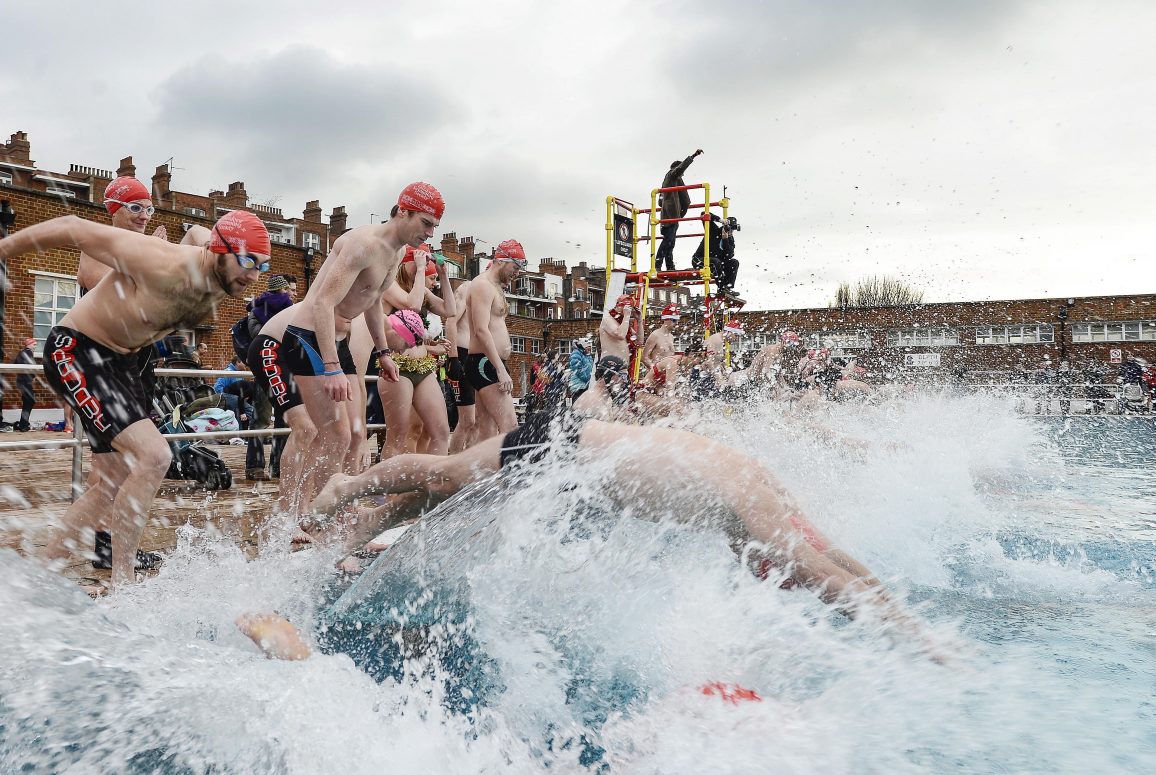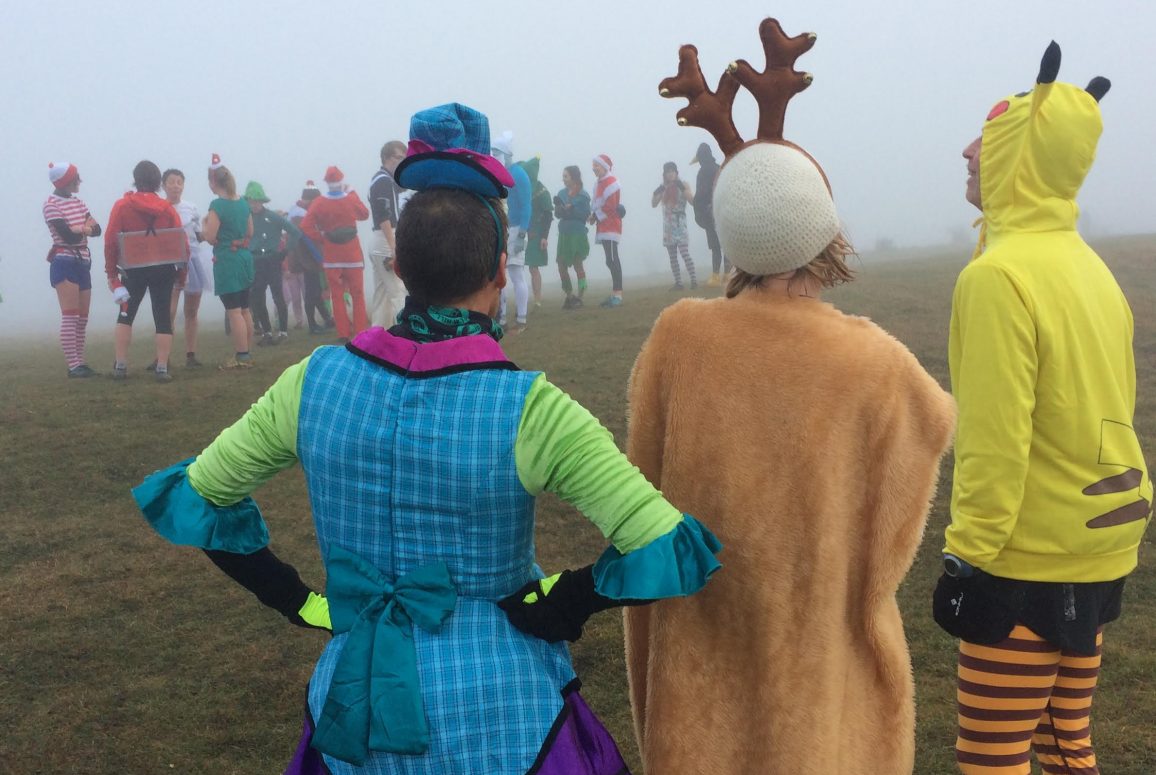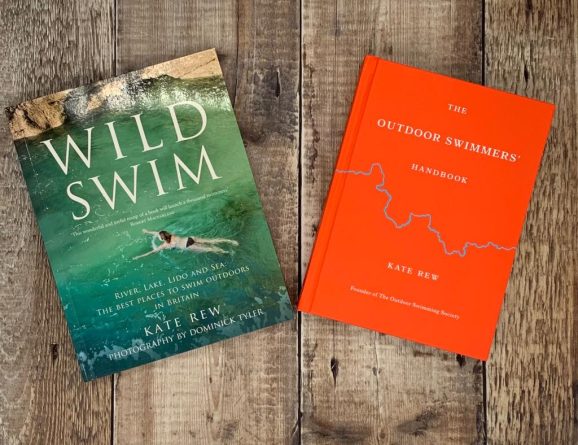
Festive dips can provide the biggest natural high you will experience all year. Add a shot of endorphins from immersion in freezing water to hilarious fancy dress and the temporary suspension of family duty and consumerism and you may well release a sense of wellbeing the rest of Christmas struggles to access. But what risks do you need to consider for a one-off winter dip?
 ©JustinSetterfield/LNP
©JustinSetterfield/LNP
Winter swimmers are now a wide and varied bunch – with the polar extremes being those who train conscientiously in gently dropping temperatures from summer on, and those who run in screaming on Christmas Day. If you are thinking of joining them this Christmas, here are the risks!
The fact that everyone else seems to be doing it all of a sudden doesn’t make it safe. Few of these dips have much in the way of safety or procedure, so it’s important – as it is in all outdoor swimming – that you knowingly and voluntarily accept responsibility for yourself.
Getting into winter water is a massive shock to the body and can lead to hyperventilation, panic attack, being quickly incapacitated by cold (which can lead to drowning if you can’t make it to shore) and an increased danger of heart failure and stroke in vulnerable individuals. More than one rib has been broken in the crazy dash to the sea, so some physical caution is recommended.
The particular physiological affects of cold water mean there are some conditions where you should either avoid a festive dip, or seek medical advice before considering it (this is not an exhaustive list):
 ©PaulScully
©PaulScully
